U.S. Governors Detail Water Priorities for 2019
State of the State speeches highlight diverse budget and policy goals.
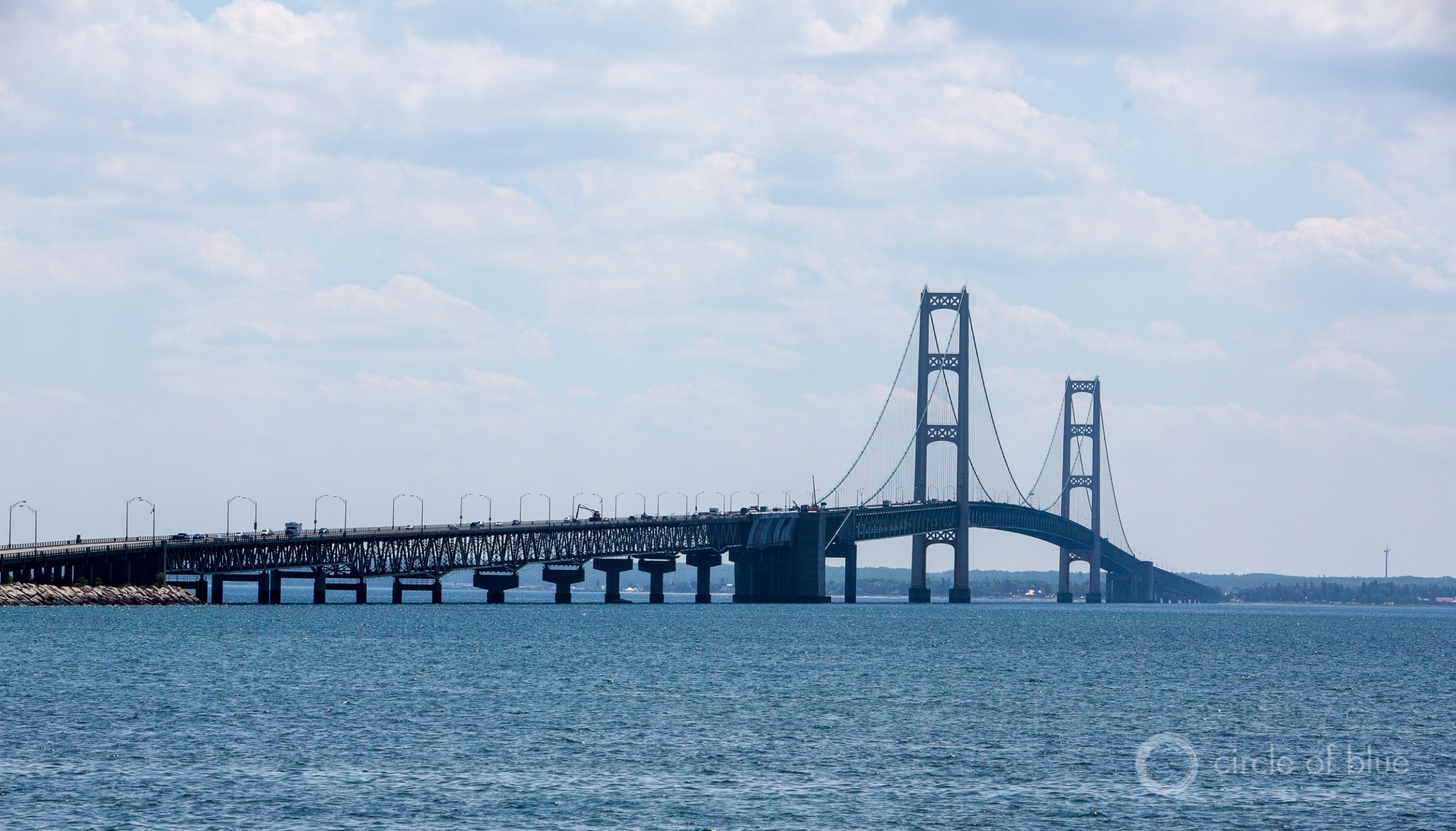
One of the questions facing Michigan Gov. Gretchen Whitmer is what to do with twin oil pipelines that run beneath the Straits of Mackinac. Her predecessor signed a deal with Enbridge, the pipeline owner, that the new attorney general is reviewing. Photo © J. Carl Ganter / Circle of Blue
By Brett Walton, Circle of Blue
A declining Colorado River in Arizona. Orcas and salmon stocks in Washington state. Forest restoration in Idaho to protect drinking water sources from wildfire. And renewable energy seemingly everywhere.
These are some of the water issues that U.S. governors have mentioned in their 2019 State of the State speeches. The speeches, usually given at the beginning of the legislative session, outline budget or policy priorities for the coming year.
This post will be updated through the end of speech season, which concludes on April 8 with Gov. John Bel Edwards of Louisiana.
Arizona
Water is at the forefront of Arizona politics right now.
Gov. Doug Ducey, a Republican beginning his second term, made that clear during his address to the Legislature on January 14.
“The issues we need to tackle aren’t partisan ones. In some cases, they aren’t even political. At the top of that list: securing our water future.
“Now stay with me — this is not an issue that leads the news. It doesn’t make for a snappy headline, or a provocative soundbite, and it can’t be explained in 280 characters. But as I traveled the state this past year, it’s one of the issues I was asked about most by real people — especially in rural Arizona.
“It’s an issue that deserves your focus and attention. Which is why it’s first on my list.”
Arizona’s immediate task is to agree on how cutbacks in Colorado River water use will be shared within the state. The cutbacks are part of a basin-wide plan to prop up declining water levels in Lake Mead.
Negotiations have taken place for more than a year, but patience is wearing thin. The Bureau of Reclamation, the federal agency that oversees water contracts in the lower basin, gave Arizona officials a January 31 deadline to finalize their plan. Thus Ducey’s serious tone.
“This issue is important and it’s urgent,” he said. “Our economy. Our environment. Our future. Let’s prove we can work together in a bipartisan fashion and get this done.”
Colorado
Gov. Jared Polis, a first-term Democrat who was elected in November, listed a range of water issues that the state faces: declining irrigation supplies for farms and ranches, less snowpack for the ski industry, and pollution from the energy industry.
A ballot initiative that would have restricted the location of oil and gas infrastructure failed last November. Polis opposed Proposition 112, which would have established a 2,500-foot setback distance from homes, schools, drinking water sources, and other vulnerable areas. Current law is 500 feet.
“It’s time for us to take meaningful action to address the conflicts between oil-and-gas drilling operations and the neighborhoods they impact, and to make sure that all of our communities have clean air and water,” Polis said, without going into more detail.
Polis reiterated his goal of powering the state with 100 percent renewable electricity by 2040, and advocated for a nascent industrial hemp industry. Proponents argue that hemp, which Congress legalized in the 2018 farm bill, could be a water-saving crop for dry states.
Polis also endorsed the state water plan, negotiated by his predecessor, John Hickenlooper.
“Now we’re going to do our part in implementing it,” he said, asking the Legislature for funding.
Delaware
Gov. John Carney, a first-term Democrat, spoke of the state’s natural assets: its bays, wetlands, parks, and rivers.
“Our natural heritage matters to Delawareans,” Carney said. “It matters to visitors. It matters to businesses looking to locate where there’s cool stuff to do, and to young people looking to move back home. And it matters to future generations.”
Those assets are at risk from rising seas and carbon emissions. Carney touted a state ban on off-shore oil drilling and membership in the U.S. Climate Alliance, an association of governors committed to cutting greenhouse gas emissions.
Carney said his budget proposal will include money to control nutrient runoff from fields and cities, as well as funds for water and wastewater treatment.
Hawaii
Gov. David Ige, a Democrat beginning his second term, said that to guard clean water the state needs to protect land.
Ige asked lawmakers to approve additional funding for land conservation, mentioning headwaters parcels in Oahu that are proposed for housing development.
“If we want green spaces, if we want to grow our own food, if we want places for recreation, if we want clean, fresh water, if we want the environment that has been so central to Hawaii’s life, we need to have special lands in public hands,” Ige said.
Idaho
In his first State of the State, Republican Gov. Brad Little called water “Idaho’s lifeblood.”
The former lieutenant governor touted progress in recharging the Eastern Snake Plain Aquifer, an important source of irrigation water for about 1 million acres of farmland. One-third of the state’s residents live in the region and the aquifer is their main drinking water supply.
Little also praised an agreement signed in December with the U.S. Department of Agriculture to reduce fire risk in national forests through prescribed burns and logging.
Maryland
Gov. Larry Hogan, a Republican reelected to a second term in 2018, said that Maryland continues to do its part to protect the Chesapeake Bay. Hogan praised himself for lobbying to preserve federal funding for cleanup activities.
Hogan also said he would “keep pushing” upstream states Pennsylvania and New York to commit to removing pollutants from their watersheds that flow into the bay. Pennsylvania is the farthest behind of the bay’s six watershed states in meeting pollution reduction targets.
Hogan acknowledged that Maryland’s biggest challenge regarding the bay is dealing with Conowingo Dam. Soil particles and nutrients have accumulated behind the 91-year-old barrier, which itself is rapidly filled in by sediment carried downstream.
Montana
Gov. Steve Bullock, a Democrat who has been in office since 2013, argued his case to the GOP-led Legislature that the state needs to invest in infrastructure. Bullock has offered a $440 million package that includes money for urban and rural needs, a schism that derailed previous large-scale plans to invest in water systems, bridges, schools, and the like.
“If we are ever going to break this logjam, we have to provide for rural and urban, for our public institutions and for our smaller communities that cannot pay for their own water and sewer upgrades,” Bullock said.
Nebraska
Gov. Pete Ricketts, a Republican beginning his second term, said that he hopes to consolidate the Department of Environmental Quality and the Energy Office into a new Department of Environment and Energy.
Doing so will allow the state to “form a more unified vision and strategic plan for our work in these related areas,” he said.
Nevada
Gov. Steve Sisolak, a Democrat elected in November, pledged to make Nevada, one of the sunniest states, a national leader in renewable energy.
Why? Jobs, for one. But also because of the climate risks from continuing to rely on fossil fuels.
“Let me be clear: I will not spend a single second debating the reality of climate change,” Sisolak said. “It is real, and it is irresponsible to ignore the science that proves it — and the lives it has already upended, especially across the West.”
Voters approved a ballot measure in November that requires state electric utilities to provide 50 percent renewable energy by 2030. To complete the amendment process to the state Constitution, voters must approve the measure again in 2020.
New Jersey
Gov. Phil Murphy, a Democrat starting his second year in office, said that lead pipes and aging water infrastructure are a statewide problem. He called on more federal funding for water systems.
“Let us use this year to also turn our attention to our aging water infrastructure. More than 1.5 million residents – north, central, and south, rural and urban – are currently serviced by water with elevated lead levels. We must leverage every opportunity to build a modern water infrastructure network that ensures the delivery of clean water to every child, and every family.
We have inherited water infrastructure that is, in some places, a century old, if not older. Some of Newark’s water lines were installed in the 1880s. Mayor Ras Baraka has been on the front lines of this, and I applaud him and his team for their work to protect Newark’s residents.
Outdated infrastructure is a national problem, and it requires a federal solution. I will continue working with our Congressional delegation to press the federal government for greater support and assistance — whether it pertains to clean water, or getting the Gateway Tunnel built.”
New Mexico
Gov. Michelle Lujan Grisham, a Democrat elected in November, said that New Mexico will be a leader in the fight against climate change.
Lujan Grisham said she will join the U.S. Climate Alliance, a group of governors committed to reducing carbon emissions. She will also require state agencies to participate in developing a state climate plan. New Mexico can cut methane leakage, make buildings more energy efficient, and invest in solar and wind power.
“Because we know we cannot rely on the federal government, right now, to lead on climate action,” Lujan Grisham explained. “It is our responsibility and indeed our moral obligation to ensure our planet and our state are preserved for our children and their children.”
New York
Beginning his third term, Democratic Gov. Andrew Cuomo said he is committed to investments in clean water and energy.
The governor proposed $2.5 billion for water infrastructure as part of a $10 billion pot of money he is calling the Green Future Fund. That fund includes money for parks, clean energy, transportation, sewers, and stormwater.
“It is our generational obligation to make sure we leave this place better than we found it,” Cuomo said. “We need to invest in clean, safe drinking water.”
Cuomo called out several problem areas. On Long Island, a plume of TCE, 1,4-dioxane, and other toxics has spread several miles underground from a facility operated by the U.S. Navy and Northrup Grumman, a defense contractor. The plume contaminated groundwater and forced water districts to shutter wells. Cleanup responsibilities have been debated for decades, Cuomo lamented.
“Grumman doesn’t want to pay, the Navy doesn’t want to pay. Let us say we’ll do the remediation and then we’re going to sue you to get the money back, but we have to keep our people safe.”
Cuomo also proposed $3.6 million for shellfish restoration as a means for cleaning local waterways, a chemical labeling law, and a state ban on plastic bags.
North Dakota
Gov. Doug Burgum, a first-term Republican, sketched a vision of global abundance, underpinned by the black gold beneath North Dakota’s Williston basin.
As countries grow wealthier they are going to want more energy and, in Burgum’s telling, North Dakota is positioned to supply it.
“A world with improving health and increasing incomes will consume more energy, more food, and more technology,” Burgum said. “The world will need more and more of what North Dakota has.”
Through this trade, the state can turn its natural resources into improvements for its own residents, Burgum said.
The governor proposes reinvesting $55 million from the state’s oil revenue to establish a revolving loan fund for drinking water, flood control, sewers, and related infrastructure projects.
Oregon
When discussing climate change, Gov. Kate Brown, a Democrat, turned to the future.
A few weeks ago Brown received a hand-drawn card from a 10-year-old, she said. The card depicted a frowning Earth with the caption “hot, hot, hot.”
The child asked what the governor was doing about climate climate.
“Our young people deserve to inherit an Oregon as beautiful and bountiful as the one we cherish today,” Brown said in her address on January 14.
“It is extremely painful to watch the effects of climate change on our communities. The Rogue Valley was covered in smoke for over eight weeks last summer. Ninety percent of our state is in drought. And last year was the warmest year in Oregon since 1895.
Wildfires have increased in intensity and severity in the past decade, threatening our culture, our communities, and our economy. Oregon must continue to pursue solutions that will reduce harmful emissions while creating good jobs and building a clean energy economy.”
South Carolina
Gov. Henry McMaster, a first-term Republican, made two prominent references to water in his State of the State speech.
First, he refused to set environmental protection against economic growth, largely in objection to drilling for oil in the waters near the state’s coast.
“Economic prosperity requires that we address water in a comprehensive fashion — whether it is flooding, sea rise, aquifer depletion, or upstream withdrawal. Make no mistake — a plentiful water supply is essential to our manufacturing, agricultural and tourism industries as well as our quality of life.
That means that we must stand firmly against all efforts to endanger the future of our pristine coastline, our beaches, our sea islands, our marshes, and our watersheds.
Ladies and gentlemen, that means we will not have offshore testing or drilling off the coast of South Carolina.”
The second notable reference was to flooding. South Carolina has been pummeled in recent years by a series of hurricanes, which, in turn, have eroded coastline and caused dams to break. Nuisance floods because of rising seas are also increasing, especially in Charleston.
Last fall, McMaster established the South Carolina Floodwater Commission, a panel of more than 50 experts, agency heads, and politicians who will report to the governor on ways to reduce flood risk and minimize negative outcomes.
Utah
Gov. Gary Herbert, a Republican who has led Utah since 2009, has seen his state change. The number of people in Utah has grown by 16 percent since he took over. Managing that growth is the state’s biggest challenge, he told lawmakers on January 31. And Utah’s geography — arid and with stagnant air over its largest city — adds to the difficulty.
“Growth makes it more challenging to protect the open spaces that provide the backdrop for our unique quality of life. It threatens the quality of our air and water and thereby our health,” Herbert said.
To reduce air pollution, Herbert floated a number of ideas: expanding electric vehicle charging stations, encouraging telecommuting and public transit for state employees, removing wood-burning stoves, and replacing gas-powered landscaping equipment with battery-powered options.
Herbert, however, was largely silent about growth and water. He did not mention a big infrastructure project that politicians in southwestern Utah, with state support, want to build — with growth as the justification. That project is the Lake Powell Pipeline, a 139-mile conduit that would tap a reservoir that is shrinking as the Southwest becomes drier. How much might the pipeline cost? The figure is disputed, with estimates ranging from $1.1 billion to $1.9 billion or more.
Vermont
For Gov. Phil Scott, reducing polluted farm runoff and cutting carbon emissions pay not only health and environmental dividends. They also boost the economic bottom line.
“To help revitalize all areas of our state, let’s modernize regulation to support growth in our local economic centers, expand broadband access and take action on climate change to strengthen our environment and economy,” he told lawmakers.
The second-term Republican pitched programs to address climate change and clean up rivers as ways to grow the economy and create jobs.
Scott, acting on a recommendation from a state climate commission, proposed $1.5 million in rebates to help state residents buy or lease electric vehicles. Ten percent of the cars and trucks in Vermont need to be electric by 2025 to keep the state on track for its energy goals, he said.
Scott offered $48 million in state and federal money for clean water projects. That proposal includes a tax compromise: using $8 million from the state estate tax for water projects but also increasing the level at which the tax applies, from $2.75 million to $5.75 million.
“If we can come together, this change will help keep more of these taxpayers here and support a legacy of clean, healthy lakes, rivers and streams, all at the same time,” Scott reasoned.
Virginia
Gov. Ralph Northam, a Democrat in the second year of his first term, proposed state spending to curb polluted runoff from farms and city streets.
Northam also called for “clean closure” of coal ash ponds in the Chesapeake Bay watershed.
“These ponds are in Republican and Democratic districts, and Virginians don’t view them through political lenses — they want them closed cleanly and their waterways protected,” Northam said. “The environmental damage that Hurricane Florence caused in North Carolina showed us what will happen to these ponds if we don’t act now.”
Washington
Gov. Jay Inslee, a Democrat, noted the threat that climate change poses to the state’s mountain snowpack, air quality, and coastal waters.
Inslee also promoted his $1.1 billion plan to protect endangered Southern Resident orcas, which face a barrage of threats to their existence, from declining salmon runs, their main food, to marine pollution.
“The actions we have to take, such as increasing salmon stocks, fixing culverts, and decreasing vessel traffic risks, are hard but necessary,” Inslee said. “We have just one last chance to save these orcas. In this perilous moment, we must answer back with action.”
West Virginia
“The only thing we don’t have is an ocean.”
So said Gov. Jim Justice in his State of the State speech.
Justice, a first-term Republican, said that West Virginia needs more lakes. They’ll provide a benefit somehow, he claimed. Either through power generation, flood control, or tourism.
“We need to develop multiple lakes within West Virginia, multiple lakes that can give us hydroelectric power — which maybe we don’t need, but at the same time, they can give us flood control.
“We need the ability to develop those lakes. Do you know if you step back and think about it, four of the most beautiful seasons in the world, the most incredible people on the planet, the most unbelievable natural resources, and we’re located within 600 miles of two-thirds of the people in the country. The only thing we don’t have is an ocean.
“Now, I am telling you, our state needs more developable lakes. It is a project that you may think is a pipe dream, but I am telling you, without any doubt, there is an infrastructure program about to be announced by our President, and we need to be at the line waiting.”
Residents might be more interested in drinking water pipes that deliver clean water and don’t leak. A recent Charleston Gazette-Mail analysis of utility reports found that more than half of treated water was lost to leaks.
Wisconsin
In his first State of the State speech, Gov. Tony Evers, a Democrat, proclaimed that 2019 would be the year of clean drinking water in Wisconsin.
Evers said he would sign an executive order to designate a person at the Department of Health Services to be in charge of the state’s efforts to reduce lead in drinking water.
Lead is not the only water pollution issue in the state. Evers noted that 1.7 million residents use private wells and nearly half do not met all drinking water standards set for public utilities. Water quality in private wells is not regulated.
Brett writes about agriculture, energy, infrastructure, and the politics and economics of water in the United States. He also writes the Federal Water Tap, Circle of Blue’s weekly digest of U.S. government water news. He is the winner of two Society of Environmental Journalists reporting awards, one of the top honors in American environmental journalism: first place for explanatory reporting for a series on septic system pollution in the United States(2016) and third place for beat reporting in a small market (2014). He received the Sierra Club’s Distinguished Service Award in 2018. Brett lives in Seattle, where he hikes the mountains and bakes pies. Contact Brett Walton

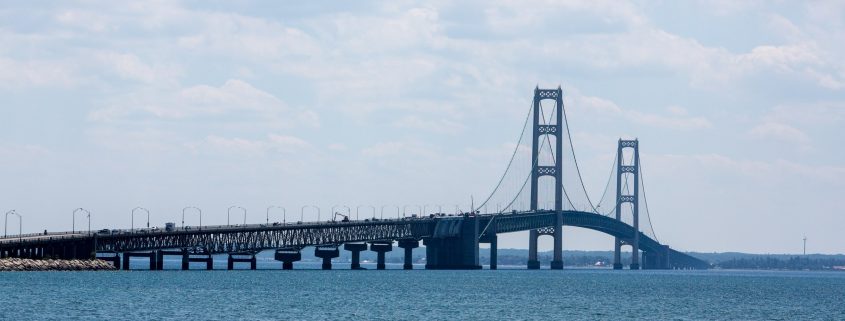

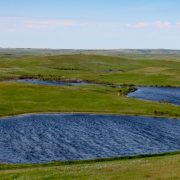
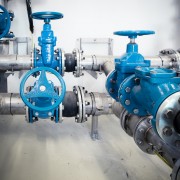
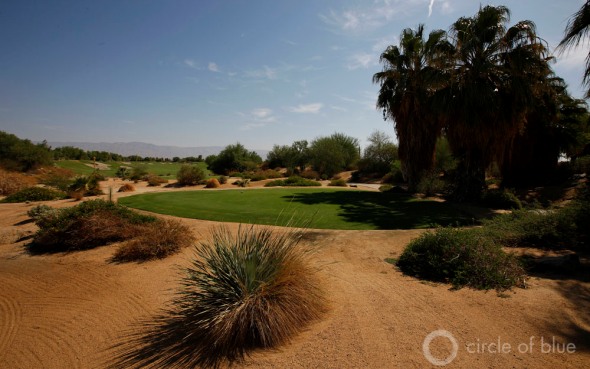



Leave a Reply
Want to join the discussion?Feel free to contribute!